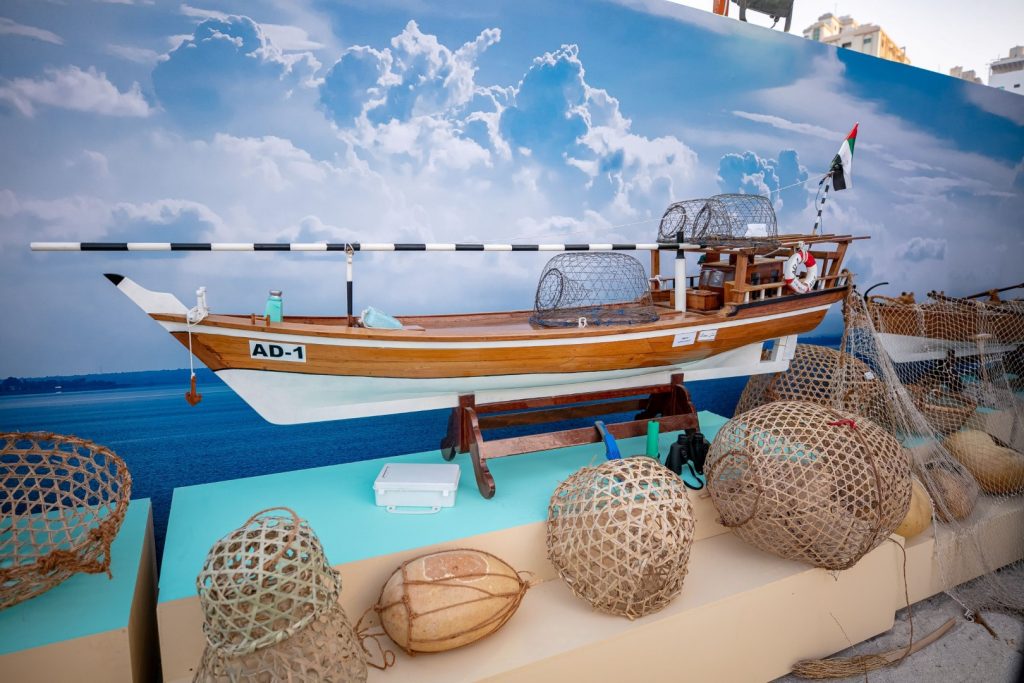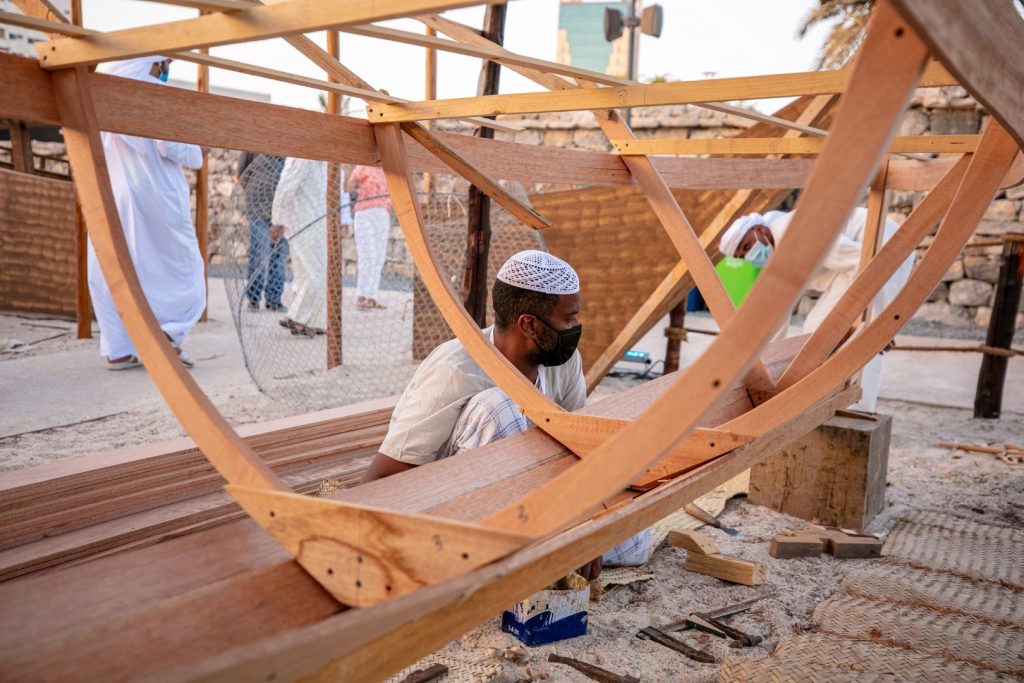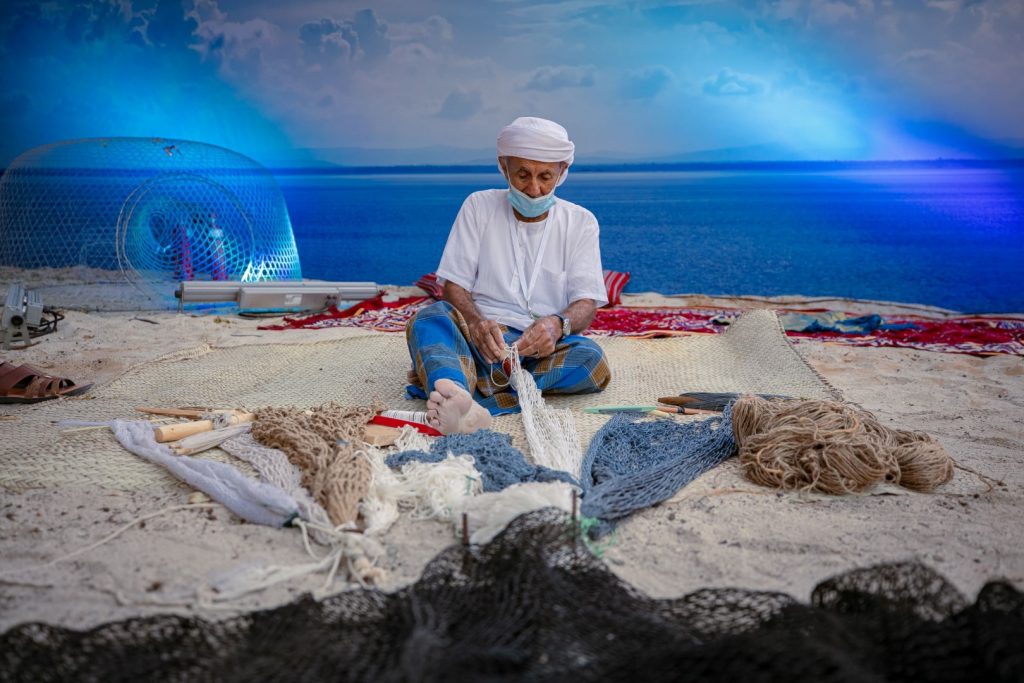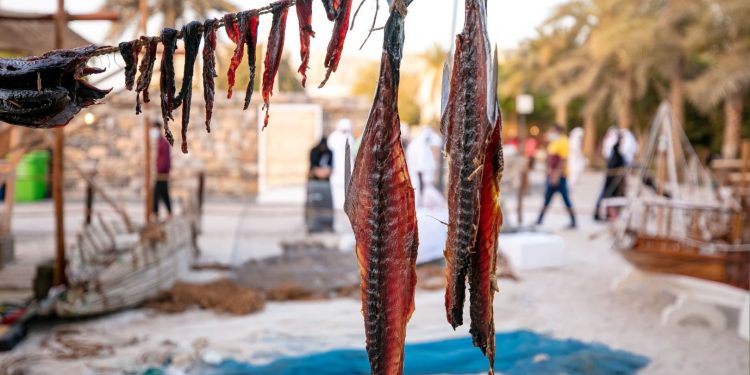Between man and the sea in the Emirates ropes of affection and waves of memories, the times of pearls made the profession of diving wide fame when the world markets were receiving pearls after being carried by hands trained in the depths to fill baskets and tie ropes.
With nostalgia for the days of the sea, the “marine environment” pavilion during the “Sharjah Heritage Days” receives its visitors. Those who wander around can capture scenes of all marine crafts and record the names of all types of boats whose functions vary from diving to fishing to guarding or traveling.

Among the panoramas of the fishermen’s crafts, the hull of the traditional diving boat “Jalboot” extends on its back a quantity of pearl shells and some equipment necessary for diving with their names closely related to the recent past, so we find the “Deen” designated to raise the diving toll and the “country” which is used to measure the depth of the sea near the shore to determine the appropriate place For boat mooring, it is an iron weight tied to a rope of a specified length.
And the diving profession became extinct, leaving the fishing profession and the tools and nets around it, including the old, original and the new, with materials that were not used before. Such a transformation occurred on the “gargour”, which is a closed basket in the form of a tight dome placed for fishing and then it is pulled out and was made in the old days of palm tree Before the iron wires enter it, the new gargour will be transformed into a larger mesh dome.
The fisherman Abu Bilal did not accept the use of wires and did not let palm palm leaves escape from his hand, so he decided to use the palm leaves to make what looks like artifacts of varying sizes that he forms without his memory being able to erase the gargour structure and its core.

The profession of taming the sea implants in the fisherman’s awareness the talent for surfing the waves of time, and this is how Abu Bilal and his companions appear in the marine environment, one of whom is drying fish for preservation using salt and air in a clever human trick that was used before modern preservation and cooling methods appeared. And it becomes suitable for storage and consumption for a long time.
In an area not far from the hull of the diving boat sits three grandmothers who grind a small type of fish and fill it in bottles in the form of coarse powder. The process first passes the stage of drying ghashi fish, then cleaning and grinding it by hand, and then consuming it.

While a group of fishermen in another corner brings the craft of boat building back to life, the wood panels move in their hands gently and put into place so that the hammers and digging tools work to show the features of the boat’s floor and structure as the men labored and poured more sweat.
After the construction of the boat is completed and begins its march at sea, the fisherman alone knows the destination of all boats, their work and their types, for the jalboot for diving, the boat for the mule for guarding, the shovels and the snooke for fishing, and for the owls for travel. Their past relives endless memories, character and sea tales.




![The Top & Most Popular Seafood Bucket Restaurants in Dubai for you [Never Miss]](https://uae24x7.com/wp-content/uploads/2020/09/8-seafood-in-a-bucket-scaled-e1600739237403.jpg)
![Procedures for Renewing the Driving License in Abu Dhabi [3 Simple Steps]](https://uae24x7.com/wp-content/uploads/2020/07/Capture-9-e1595666454466.jpg)





